Women Scientists In Life Science – Contribution In Past 10 years
There were times when women had not been taking part in social activities other than religious and cultural works, not only in India but throughout the world. Gradually the society progressed and men in the family started considering the potential of the womenfolk outside the home as well. Starting from Anandibai Gopalrao Joshi, who was the first Indian woman doctor to Kalpana Chawla, the first Indian woman to go to space, we have numerous examples in our own country, where women proved their potential to equally lead the male-dominated Science fraction. Also, we have a number of leading female researchers of Indian and foreign origins who have set examples and received international recognition. Let us have a look at some of the latest contributions made by Women Scientists In Life Science field in the last 10 years.
Table of Contents
Françoise Barré-Sinoussi
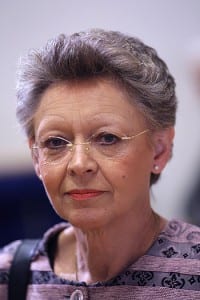
Is a French virologist and Director of the Regulation of Retroviral Infections Division and Professor at the Pasteur Institute in Paris. She shared the Nobel Prize of 2008 in Physiology
or Medicine with Luc Montagnier for their discovery of “human immunodeficiency virus” (HIV). Virus production was detected in lymphocytes obtained from the enlarged lymph nodes and blood of the patients in the early and late stages of acquired immunodeficiency, respectively. The researchers detected the activity of the retroviral enzyme reverse transcriptase and retroviral particles budding from the infected cells, in the isolated and cultured cells from lymph nodes of patients with the lymphadenopathy characteristic of the early stage of acquired immune deficiency. The isolated virus was found to infect and kill lymphocytes from healthy donors and also to react with antibodies from infected patients. Several isolates of this novel human retrovirus had been obtained by the researchers from hemophiliacs, mother to infant transmissions, sexually infected individuals, and transfused patients. This retrovirus was characterized on the basis of its morphological, biochemical and immunological properties as the first known human lentivirus. The discovery by Women Scientist – Françoise Barré-Sinoussi, was one prerequisite for the then understanding of the biology of the disease and its antiretroviral treatment.Elizabeth Blackburn
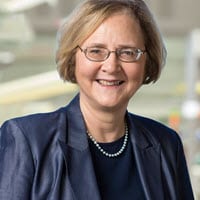
Another Women Scientist who was awarded the Nobel Prize in Physiology or Medicine-2009 along with Carol Greider and Jack Szostak for the discovery on telomere and telomerase. Telomerase is a two-edged sword, in humans, the detailed study of which made Blackburn believes that telomere shortening in normal cells of the body can fasten some of the most common diseases of aging. However, the role of long and short telomeres differ in this respect. Long telomeres were observed to slow it down. The researchers were awarded because the discovery leads to an understanding of a fundamental mechanism that added a new dimension to our understanding of the cell, shed light on disease mechanisms, and stimulated the development of potential new therapies. The discovery of telomerase & function of Telomeres has wide applications in the field research more specifically in the health sector.
Carol W. Greider
She shared the 2009 Nobel Prize with Elizabeth Blackburn and Jack W. Szostak for discovering telomere functions and telomerase activity. She is the perfect example for kids with behavioral issues. She represents an excellent example of a successful journey from being a dyslexic to a successful researcher.
Ada E. Yonath
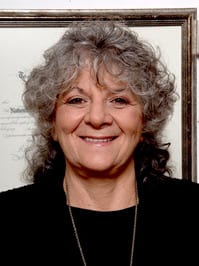
Ada E. Yonath – a women scientist in life science – was the awardee of the Nobel Prize in Chemistry for the year 2009 to regard his studies of translation of DNA information by ribosomes. Protein synthesis or translation is carried out by ribosomes, which ultimately controls the physiology and metabolism in all living organisms. Ribosomes can make a variety of proteins, be it the antibodies of the immune system, collagen in the skin, enzymes that break down sugar, oxygen-transporting hemoglobin or hormones such as insulin. Like humans, micro-organisms and plants also cannot survive without these basic machineries. Therefore, new antibiotics are constantly being developed which also inhibit the ribosomal functions. Dr. Yonath shared this award with Venkatraman Ramakrishnan and Thomas A. Steitz for demonstrating the structure and functions of ribosomes at the atomic level. X-ray crystallography was used to map the position of each and every atom making the ribosome.
May-Britt Moser
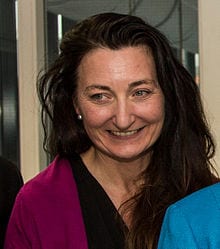
She was the Nobel Laureate in Physiology – Medicine for the year 2014. The awareness of one’s location and how to find the way to other places is crucial for both humans and animals. Due to constant efforts of researchers in psychology and neuroscience, it had become possible to find out an answer to a century old question that how humans understand their location in their environment and how they find out distances. Previously in 1971, by recording electrical signals from individual nerve cells, John O’Keefe of University College London opened up a whole area of research about how the hippocampus contributes to memories. In 2005, May-Britt Moser along with her husband Edvard I. Moser discovered that nerve cells of a rat fire in the entorhinal cortex, a region near the hippocampus, when the animal scuttled past particular locations arranged in a hexagonal grid. These “grid cells” associated with other cells to form the brain’s positioning system. Similar grid arrangement has been found in the human brain. Their work paved the way for other neuroscientists working on diseases like Alzheimer’s, to find an explanation about early symptoms of the diseases.
Tu Youyou
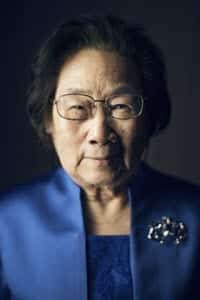
Another woman scientist, who won the Nobel Prize for Physiology or Medicine for the succeeding year 2015. It was shared with William C. Campbell and Satoshi Ōmura. The team made an effort to deal with parasitic diseases which represent a major international health issue. Certain therapies were discovered that have intensified the treatment of some of the most devastating parasitic diseases. A new drug, Avermectin was discovered by Campbell and Ōmura. It was found to significantly lower the incidence of River Blindness, Lymphatic Filariasis as well as against other parasitic diseases. Another drug Artemisinin discovered by Youyou, was found to have a significant reduction in mortality rates of patients suffering from Malaria. These two discoveries have provided humankind with powerful new means to fight these devastating diseases that have an effect on millions of people annually.
Frances Arnold

Another Nobel Laureate in Chemistry (2018), who helped stimulate Biological Research. Frances H. Arnold, the fifth woman to receive the chemistry Nobel, is an American Chemist. She had received half of the prize for being the first to artificially direct the evolution of enzymes. Another half of the prize was shared between George P. Smith (University of Missouri), and Gregory P. Winter (MRC Laboratory of Molecular Biology). These are the people who developed the technique called phage display. The research work started in 1985, with the discovery of a way for using bacteria and phages to isolate the genes for targeted proteins by Smith. Here, genes of interest were linked to the phage protein capsule gene. This made possible the isolation of phages of interest that made the protein target, using antibodies. This work has enabled researchers to harness the power of natural selection for protein engineering and became the backbone of the biotechnology and pharmaceutical industries.
Barbara Rosemary Grant
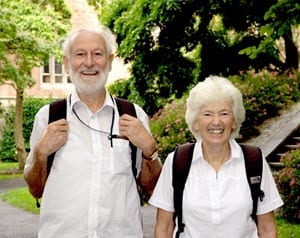
An evolutionary Biologist, who has shared Kyoto Prize (2009) with her husband Peter Raymond Grant for the year for their remarkable demonstration of rapid evolution caused by natural selection in response to environmental changes. Kyoto Award is an international award honoring significant contributions to the scientific, cultural and spiritual betterment of mankind. The couple has been working for decades to demonstrate how very rapid changes in body and beak size in response to changes in the food supply are driven by natural selection. They have also described the mechanisms by which new species arise and the ways to maintain genetic diversity in natural populations.
Linda J. Saif
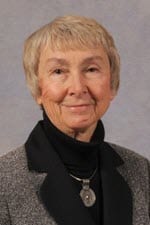
She is an American microbial scientist working at Ohio State University. She became the first Women Scientists to win the Wolf Prize- Agriculture awardee in 2015, for her contributions in the field of virology and immunology. The committee recognized her research on novel enteric and respiratory viruses of food animals and humans. The work has opened ways for getting the details of the gut-mammary immunologic axis and have also provided new strategies to design vaccines.
Xiaowei Zhuang
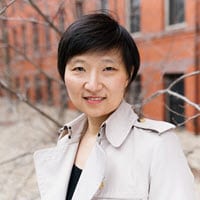
A multi-talented Women Scientists In Life Science who is the recipient of one of the most prestigious awards, Heineken Prize (2018) in Biochemistry, along with several other honors. She is a Chinese-American biophysicist, a Professor of Science, Professor of Chemistry and Chemical Biology and Professor of Physics as well as an Investigator at the Howard Hughes Medical Institute. She is best known for her work in the development of Stochastic Optical Reconstruction Microscopy (STORM), a super-resolution fluorescence microscopy method, and the discoveries of novel cellular structures using STORM.
While it’s inspiring to see the contributions of these Women scientists In Life Science field, yet many more milestones are yet to be achieved. Dorothy Hodgkin (1976) was the only female who has been awarded the Copley Medal to date, which is the oldest scientific award given by the Royal Society, London (Since 1731) – Why not break this trend. Considering the Indian scientific scenario, although the Govt has launched various schemes to encourage Women scientists, still, there is a scope of much more support.
We would like to know your views as well on – How can women scientists contribute more to society? How can more women be encouraged to join the life science research field especially in India? What are the steps that Govt, as well as private Institutes, should take in this direction? Do share your views in the comment section below.
 Dr. Preeti Saini is Ph.D. in Soil Microbiology from Punjab Agricultural University, Dr. Saini wears many hats at BioTecNika. She is involved in designing Courses, coordinating conferences and loves to educate her students about the latest from the world of Life Sciences.
Dr. Preeti Saini is Ph.D. in Soil Microbiology from Punjab Agricultural University, Dr. Saini wears many hats at BioTecNika. She is involved in designing Courses, coordinating conferences and loves to educate her students about the latest from the world of Life Sciences. Read Also: Exclusive Govt Fellowships For Women Scientists & Researchers





























